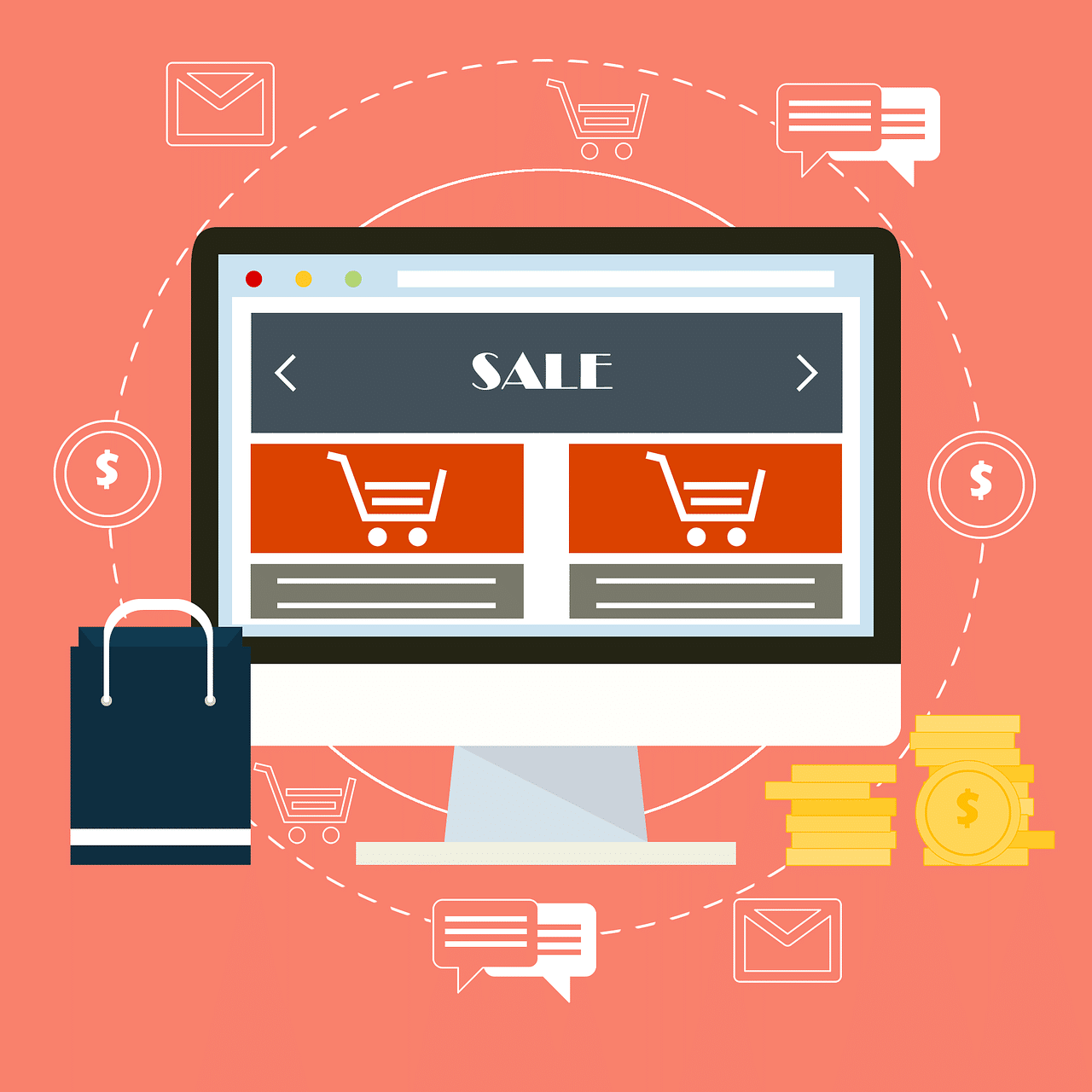Looking to make some extra cash or start your own small business? Selling items online might just be the quick solution you're looking for. With the power of the internet, you can tap into a vast pool of potential customers and turn your unwanted items or handmade creations into profit. While there are plenty of online marketplaces to choose from, it's essential to find the right platform that suits your needs and goals. Popular options like Amazon, eBay, and Etsy each have their own unique advantages and cater to different types of sellers. If you prefer a more local approach, platforms like Craigslist and Facebook Marketplace allow for in-person sales and transactions. When meeting buyers in person, safety should always be a priority, so be sure to choose well-lit public places as your meeting spots. By following best practices and choosing the right platform for your needs, you'll be well on your way to turning those extra items into cold hard cash.
Choosing the Right Platform
Selling items online can be a quick way to make money or start a small business venture. However, with so many online platforms available, it can be overwhelming to determine which one is the right choice for you. Here are some factors to consider when choosing the right platform:

This image is property of pixabay.com.
Consider the target audience
Before selecting a platform, it's essential to consider your target audience. Different platforms cater to different demographics and niche markets. For example, if you are selling handmade or artistic goods, platforms like Etsy may be more suitable as they have a focus on cultivating a unique brand and connection with customers. Understanding your target audience will help you select a platform where your products will likely receive more attention and generate sales.
Evaluate the fees and charges
Most online marketplaces charge a fee for using their platform. It's crucial to evaluate these fees and charges to ensure they align with your budget and profit margins. Some platforms may charge listing fees, transaction fees, or monthly subscription fees. Take note of these costs and compare them across different platforms to find the most cost-effective option for your online store.
Assess the competition
Another factor to consider is the level of competition on a particular platform. The largest online marketplaces may have more users, but they can also result in a smaller fish, big pond scenario where your products may get lost amidst the crowd. On the other hand, smaller, specialized platforms may have a smaller user base but offer more opportunities for your products to stand out. Assessing the competition will help you determine how likely your products are to be noticed and purchased by potential customers.
Review seller protections and policies
When choosing an online platform, it's crucial to review the seller protections and policies they have in place. Look for platforms that offer protection against fraudulent buyers, provide clear guidelines on handling disputes, and have efficient customer support systems. It's important to ensure that you feel comfortable and supported by the platform you choose to sell on, as this can greatly impact your overall selling experience.
Researching Popular Marketplaces
Once you have determined the factors to consider when choosing a platform, it's time to research popular marketplaces to find the one that best suits your needs. Here are some popular platforms to explore:
Amazon as a selling platform
Amazon is a popular online marketplace for selling products. It offers a vast customer base and provides both free and paid seller plans. The free plan, known as the Individual plan, charges a small fee per item sold, while the paid plan, known as the Professional plan, charges a monthly subscription fee but reduces the per-item fee. Amazon provides tools for inventory management and order fulfillment, making it easy to streamline your operations. Additionally, Amazon offers advertising options to help increase the visibility of your products.
Exploring eBay's features
eBay is known for its wide range of products and options for auction or fixed-price listings. It allows sellers to reach a global audience and offers various selling formats and customization options. eBay provides tools for managing listings, handling transactions, and shipping items. It also offers seller protections, such as seller performance standards and policies against unpaid items. With its large user base and extensive features, eBay can be a suitable platform for sellers looking for flexibility and the ability to reach a diverse customer base.

This image is property of pixabay.com.
Understanding Etsy's unique selling points
Etsy is a platform for selling handmade and artistic goods. It distinguishes itself from other marketplaces by focusing on cultivating a unique brand and connection with customers. Etsy provides features to customize your storefront, showcase your brand story, and engage with buyers through personal messaging. It also has a community aspect, allowing sellers to participate in forums and share tips and advice. If you are selling unique, handmade, or artistic products, Etsy can be a valuable platform to showcase your craftsmanship and connect with customers who appreciate the value of handmade goods.
Benefits of local online marketplaces
In addition to the larger online marketplaces, don't overlook the benefits of local online marketplaces like Craigslist and Facebook Marketplace. These platforms allow for in-person sales and transactions, which can be advantageous for sellers who prefer face-to-face interactions or want to offer local pickup options. Local online marketplaces can help you reach customers in your immediate area and build a reputation within your local community. However, it's important to stay safe and follow best practices when selling in person, such as meeting in well-lit public places and taking precautions to protect yourself and your products.
Setting Up an Online Store
Once you have chosen the platform that best fits your needs, it's time to set up your online store. Here are some steps to follow:
Creating a seller account
Start by creating a seller account on your chosen platform. This typically involves providing your personal and business information, including your name, address, and payment details. Some platforms may require additional verification steps, such as confirming your identity or providing proof of address. Follow the platform's guidelines and provide accurate information to ensure a smooth registration process.
Setting up payment methods
Next, set up your payment methods. Most platforms offer various options, such as PayPal, Stripe, or direct bank transfers. Choose the payment methods that are convenient for both you and your customers. Ensure that the payment methods you select are secure and reliable to protect both your business and your customers' financial information.
Optimizing product listings
To attract potential customers and maximize sales, it's essential to optimize your product listings. Use high-quality product photos that showcase your items in the best light. Write detailed and accurate product descriptions that highlight the features and benefits of your products. Incorporate relevant keywords into your titles and descriptions to improve the discoverability of your listings. Additionally, consider offering competitive pricing and implementing promotions or discounts to entice potential buyers.
Designing a visually appealing storefront
A visually appealing storefront can leave a lasting impression on potential customers. Customize your storefront to align with your brand image and create a cohesive visual experience. Use your brand logo, colors, and fonts to establish a recognizable identity. Organize your product categories and listings in a user-friendly manner, making it easy for customers to navigate and find what they are looking for. A well-designed storefront can enhance the overall shopping experience and motivate customers to make a purchase.
Finding Profitable Products to Sell
One of the keys to running a successful online store is finding profitable products to sell. Here are some steps to help you identify products with high potential:

This image is property of pixabay.com.
Identifying trending products
Keep an eye on current trends and popular products in your niche. Research what products are in high demand and adjust your inventory accordingly. Use online tools, social media platforms, and industry publications to stay updated on the latest trends. By offering products that are currently in demand, you can increase your chances of attracting customers and generating sales.
Conducting market research
Market research plays a crucial role in understanding your target audience, identifying their needs, and finding gaps in the market. Research your competitors to see what products they are offering and how they are positioning themselves. Identify key features or benefits that make your products stand out from the competition. Additionally, gather feedback from potential customers to gain insights into their preferences and requirements. The more you understand your market, the better equipped you will be to offer products that meet their needs and desires.
Locating reliable suppliers
To ensure the quality and availability of your products, it's essential to find reliable suppliers. Research different suppliers, compare their prices and terms, and evaluate their track record. Look for suppliers who have a good reputation, offer competitive pricing, and provide reliable shipping and fulfillment services. Establishing strong relationships with your suppliers will help ensure a steady supply of high-quality products and minimize issues with inventory management and fulfillment.
Considering profit margins and competition
When selecting products to sell, consider both the profit margins and the level of competition. Choose products that offer a reasonable profit margin while considering the expenses associated with sourcing, storing, and shipping the products. Additionally, assess the level of competition for each product. Highly saturated markets may require more effort to stand out, while niche markets may offer opportunities for higher profit margins with fewer competitors. Finding the right balance between profit potential and competition will be crucial to your store's success.
Managing Inventory and Fulfillment
Effectively managing your inventory and fulfillment process is essential for maintaining a successful online store. Here are some steps to help streamline these operations:
Organizing inventory management systems
Implement an inventory management system to keep track of your products, stock levels, and sales. This can help prevent overselling or running out of stock, which can lead to dissatisfied customers. Use inventory management software or spreadsheets to record product details, quantities, and suppliers. Regularly update your inventory records and conduct regular stock counts to ensure accuracy.
Establishing a shipping process
Develop a well-defined shipping process to ensure prompt and reliable delivery of your products. Research different shipping carriers and compare their services, prices, and delivery times. Determine the best shipping methods for your products based on factors such as weight, size, and fragility. Set clear shipping policies for your customers, including estimated delivery times and any additional fees. Automate shipping labels and tracking numbers to streamline the fulfillment process.

Dealing with returns and customer inquiries
Develop a process for handling returns and customer inquiries. Clearly communicate your return policy to customers and provide easy-to-follow instructions on how to initiate returns or seek assistance. Respond promptly to customer inquiries and provide accurate and helpful information. Consider implementing a customer support system to manage and track customer inquiries effectively. Resolving issues in a timely and satisfactory manner can help build trust and loyalty with your customers.
Implementing effective packaging strategies
Invest in quality packaging materials and consider incorporating branding elements into your packaging. Use sturdy packaging to protect your products during shipping and ensure they arrive in excellent condition. Consider adding personal touches, such as thank-you notes or branded stickers, to create a positive unboxing experience for your customers. Additionally, explore eco-friendly packaging options to align with sustainability initiatives and cater to environmentally conscious customers.
Driving Traffic to Your Online Store
Once your online store is set up and your products are ready to sell, it's crucial to drive traffic to your store to increase visibility and sales. Here are some strategies to consider:
Utilizing SEO techniques
Search Engine Optimization (SEO) can help improve your store's visibility in search engine results. Optimize your product listings and store pages by incorporating relevant keywords into your titles, descriptions, and meta tags. Write informative content, such as blog posts or guides, that are optimized for search engines. Additionally, build backlinks from reputable websites and directories to improve your website's authority and ranking in search results.
Creating engaging product descriptions
Craft compelling and engaging product descriptions that highlight the unique features and benefits of your products. Use descriptive language that resonates with your target audience and motivates them to make a purchase. Utilize persuasive techniques, such as storytelling or social proof, to create a connection with potential customers. Include high-quality product images and videos to visually represent your products and provide additional information.
Leveraging social media platforms
Social media platforms offer opportunities to connect with potential customers and promote your products. Identify the social media platforms that are popular with your target audience and create dedicated business pages or profiles. Regularly share engaging content related to your products, such as product showcases, tutorials, or user-generated content. Engage with your audience by responding to comments, messages, and reviews. Consider running sponsored posts or ads to reach a wider audience and drive traffic to your online store.
Implementing online advertising strategies
Online advertising can be an effective way to increase brand awareness and drive traffic to your store. Consider platforms like Google Ads or social media advertising platforms to reach a wider audience. Set a budget and create targeted campaigns that align with your business goals. Monitor and optimize your ads regularly to ensure they are performing well and generating a return on investment. Test different ad formats and messaging to find what resonates best with your target audience.
Building Trust with Customers
Building trust with your customers is vital for long-term success. Here are some strategies to foster trust and nurture strong customer relationships:

Providing accurate product information
Ensure that the product information you provide is accurate and clearly communicated. Include detailed descriptions, specifications, and any relevant information about your products. Use high-quality images that accurately represent the product's appearance and features. Avoid exaggeration or misleading claims. By providing accurate product information, you demonstrate transparency and integrity, which builds trust with your customers.
Offering competitive pricing
Pricing plays a significant role in the purchasing decision of customers. Regularly review and adjust your pricing strategy to remain competitive in the market. Consider factors such as product quality, uniqueness, and demand when determining your pricing. Avoid overpricing or underpricing your products, as both can negatively impact customer perception and trust. Offering competitive pricing demonstrates that you value your customers and ensures they feel they are getting value for their money.
Providing exceptional customer service
Good customer service is essential for building trust and loyalty. Respond to customer inquiries promptly and provide helpful and accurate information. Be courteous and professional in all interactions with customers. Address any issues or concerns in a timely and satisfactory manner. Consider implementing a customer support system to manage and track customer inquiries effectively. Providing exceptional customer service shows that you are committed to your customers' satisfaction and builds trust in your brand.
Managing customer reviews and feedback
Encourage customers to leave reviews and provide feedback about their experience with your products and store. Respond to reviews, both positive and negative, in a respectful and constructive manner. Use customer feedback to identify areas for improvement and make necessary changes. Implement a system to monitor and manage customer reviews across various platforms. Positive reviews and high ratings can boost customer confidence and attract new customers, while negative reviews provide an opportunity to address and resolve issues publicly.
Promoting Your Online Store
In addition to driving traffic to your online store, it's essential to actively promote your store to reach a wider audience. Here are some promotional strategies to consider:
Utilizing influencer marketing
Collaborate with influencers who have a significant following in your niche. Reach out to influencers whose audience aligns with your target market and ask them to promote your products. This can include sponsored posts, product reviews, or giveaways. Influencer marketing can help increase brand awareness and generate sales by leveraging the trust and influence of popular personalities.
Running promotional campaigns
Create and run promotional campaigns to incentivize purchases and drive sales. This can include offering discounts, free shipping, or bundle deals. Promote these campaigns through various channels, such as email newsletters, social media posts, or targeted online advertisements. Set clear promotional periods and communicate the terms and conditions of the promotions to your customers. Limited-time offers or exclusive deals can create a sense of urgency and encourage customers to make a purchase.
Implementing email marketing strategies
Build an email marketing list and regularly send newsletters or promotional emails to your subscribers. Offer incentives, such as exclusive discounts or early access to new products, to encourage sign-ups. Use email marketing software to personalize and automate your email campaigns. Segment your email list based on customer preferences or purchase history to deliver targeted and relevant content. Email marketing allows you to directly engage with your audience and drive them back to your online store.
Collaborating with other sellers for cross-promotion
Consider collaborating with other sellers or businesses in complementary niches for cross-promotion opportunities. This can involve featuring each other's products on your respective platforms or co-hosting promotions or events. Cross-promotion allows you to tap into each other's customer base and expand your reach. Be strategic in your collaborations and choose partners that have a similar target audience or brand values.
Analyzing Sales and Performance
To continuously improve and grow your online store, it's crucial to analyze sales and performance data. Here are some areas to focus on:
Tracking sales metrics and performance indicators
Monitor and track key sales metrics and performance indicators to gain insights into your store's performance. Analyze data such as revenue, conversion rates, average order value, and customer acquisition costs. Identify patterns or trends and use this information to make data-driven decisions. Set specific goals and benchmarks for key metrics and regularly review and adjust your strategies based on the results.
Analyzing customer data and demographics
Examine customer data and demographics to better understand your target audience and their behaviors. Track data such as customer demographics, purchase history, and browsing patterns. Identify your most valuable customer segments and tailor your marketing efforts to target those segments effectively. Use customer data to identify opportunities for personalization or customization in your product offerings or marketing campaigns.
Identifying areas for improvement
Continuously identify areas for improvement within your online store. This can include aspects such as website navigation, checkout process, or product selection. Gather feedback from customers, conduct user testing, or analyze customer behavior to pinpoint areas that may need optimization. Regularly make updates and improvements to enhance the overall shopping experience and increase customer satisfaction.
Adapting strategies based on data-driven insights
Use the insights gained from analyzing sales and performance data to adapt and refine your strategies. Implement changes based on data-driven insights to optimize your marketing efforts, improve your product offerings, or streamline your operations. Regularly monitor the impact of these changes and make further adjustments as needed. By using data to drive decision-making, you can continuously improve the performance and profitability of your online store.
Conclusion
Setting up and managing a successful online store requires careful consideration and strategic decision-making. By choosing the right platform, researching popular marketplaces, setting up an online store effectively, finding profitable products to sell, managing inventory and fulfillment, driving traffic to your store, building trust with customers, promoting your store, and analyzing sales and performance, you can position your online store for long-term success. Remember to continuously adapt, learn from your data, and stay attuned to market trends to stay ahead in the ever-evolving e-commerce landscape.

